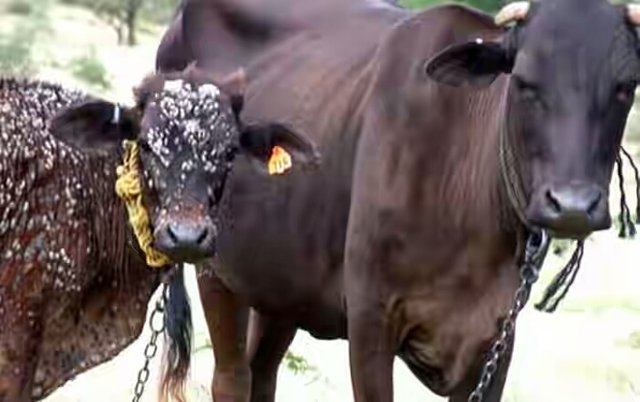Haemochus contortus(wire worm): the deadly parasite that affect the lives of ruminant animals

Source:https:http://www.goatbiology.com/parasites.html
Thank you for your comments and upvoting my post yesterday. Today I will be posting another interesting article on nematodes (roundworm) called Haemochus conturtus, also known as wire worm.
Haemochus conturtus
H.conturtus is a common parasite and one of the most pathogenic nematode of ruminants (sheep, goat and cattle).
This parasite is prevalent in the tropic region particularly west and eastern part. The sporadic stage of human reflection has been reported in Brazil and Australia.

Source: https://www.wormx.info/image-gallery
How does it develop
The adult female worm shed 5,000 -10,000 eggs per day in the host species, which are passed out in the feces.
Eggs then develop in moist conditions in the feces and continue to develop into the L1 (rhabditiform), and L2 juvenile stages by feeding on bacteria and detritus in the dung.
The L1 stage usually occurs within four to six days under the optimal conditions of 24–29 °C. The L2 rhabditform sheds its cuticle and then develops into the L3 filiariform infective larvae.

Source : https://bugconsortium.wordpress.com/parasitic-worms/
The L3 form has a protective cuticle, but under dry, hot conditions, survival is reduced. Sheep, goats, and other ruminants become infected when they graze and ingest the L3 infective larvae.
The infective larvae pass through the first three stomachs to reach the abomasum. There, the L3 shed their cuticles and burrow into the internal layer of the abomasum, where they develop into L4, usually within 48 hours, or preadult larvae.
The L4 larvae then molt and develop into the L5 adult form. The male and female adults mate and live in the abomasum, where they feed on blood.
Pathology
H.conturtus are voracious blood sucker. About 2,000 worms consume 30litres of blood per day and therefore cause severe haemania.
Accute infection occur due to prolonged reinfection and it last for 1-6weeks.
During this period, infected host present inflammation of mucus membrane,constipation and anaemia associated with extreme weakness, breathlessness and loss of weight.


Souce: http://www.imgrum.org/user/championwildlife/3690712639
Sudden death may be the only observation in acute infection, while other common clinical signs include pallor, anemia, oedema, ill thrift, lethargy, and depression.
In rare cases, hyper accute heamochiosis may occur due to over whelming challenges impose by massive infection.
Prevention and Control
Successful control measure adopted must be contained with objective of reducing pasture contamination preventing infection in young animals.
This procedure requires good grazing management to maintain an adequate nutritional level.
Prophylactic anthelmintic treatment necessary to prevent infection in endemic regions, but wherever possible, a reduction on reliance on chemical treatment is warranted given the rapid rise of anthelmintic resistance.
Targeted selective treatment methods such as the FAMACHA method may be valuable in reducing the number of dosing intervals, thus reducing the percentage of surviving parasites that are resistant to anthelmintics. Fecal egg counts are used to track parasite infestation levels, individual animals' susceptibility, and anthelmintic effectiveness.
Other management strategies include selective breeding for more parasite-resistant sheep or goats (e.g. by culling the most susceptible animals or by introducing parasite-resistant breeds such as Gulf Coast Native sheep); careful pasture management, such as managed intensive rotational grazing, especially during peak parasite season; and "cleaning" infested pastures by haying, tilling, or grazing with a nonsusceptible species (e.g. swine or poultry).
Thats all i have for you guys today and thanks again for reading. Comment, upvote and resteem if you enjoy reading my article on nematodes. Stay healthy!!!
You aren't sourcing properly, and please use the nfsw tag, I mean edit and use it right now, not everyone may appreciate such sights.
Please source properly, copy the link in its entirety and paste it.
Better yet, use a free image hosting site like imgur or pexel, citing a source may not be enough to prevent any lawsuit
Alright bro. I ll edit right away. Thanks for the tip